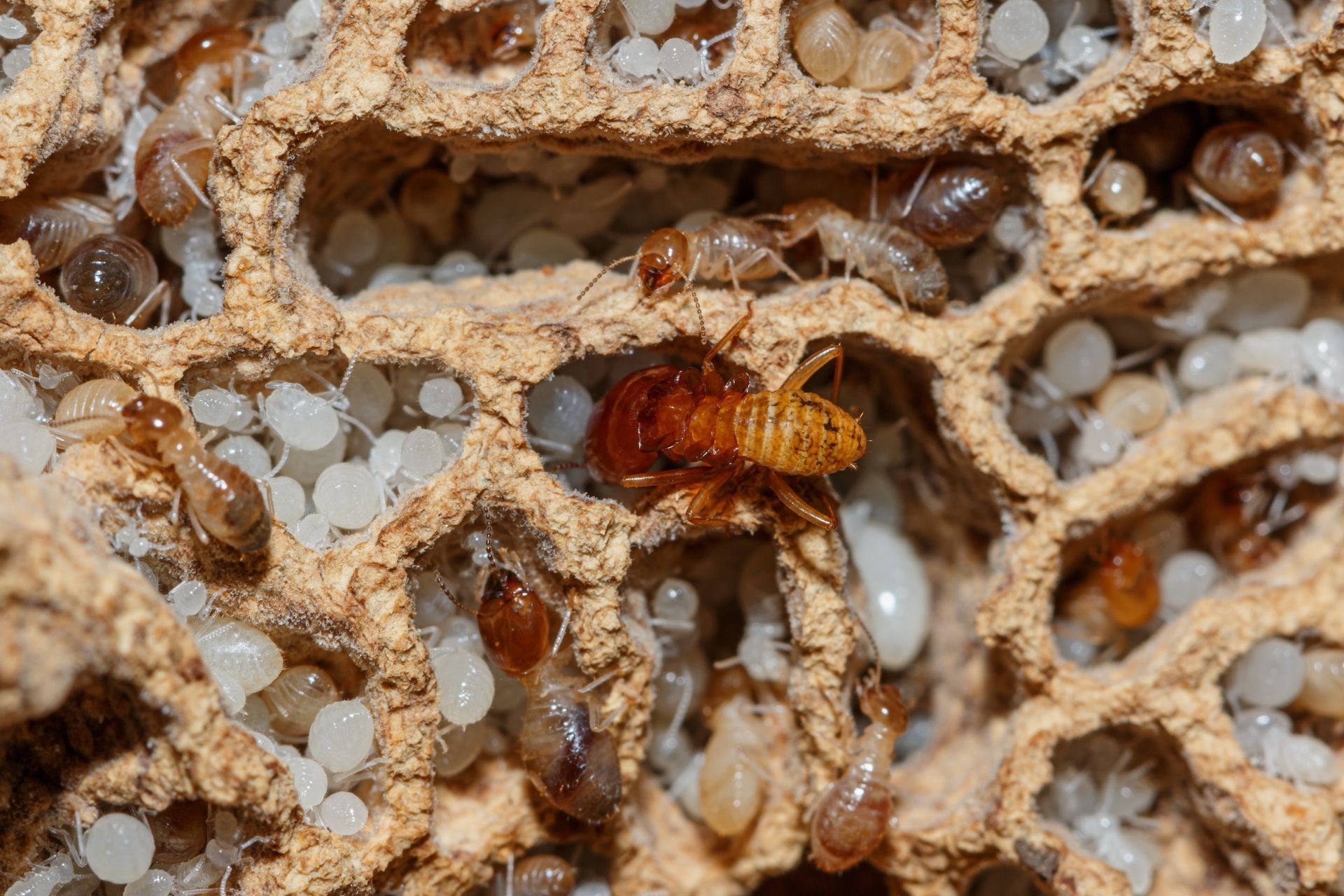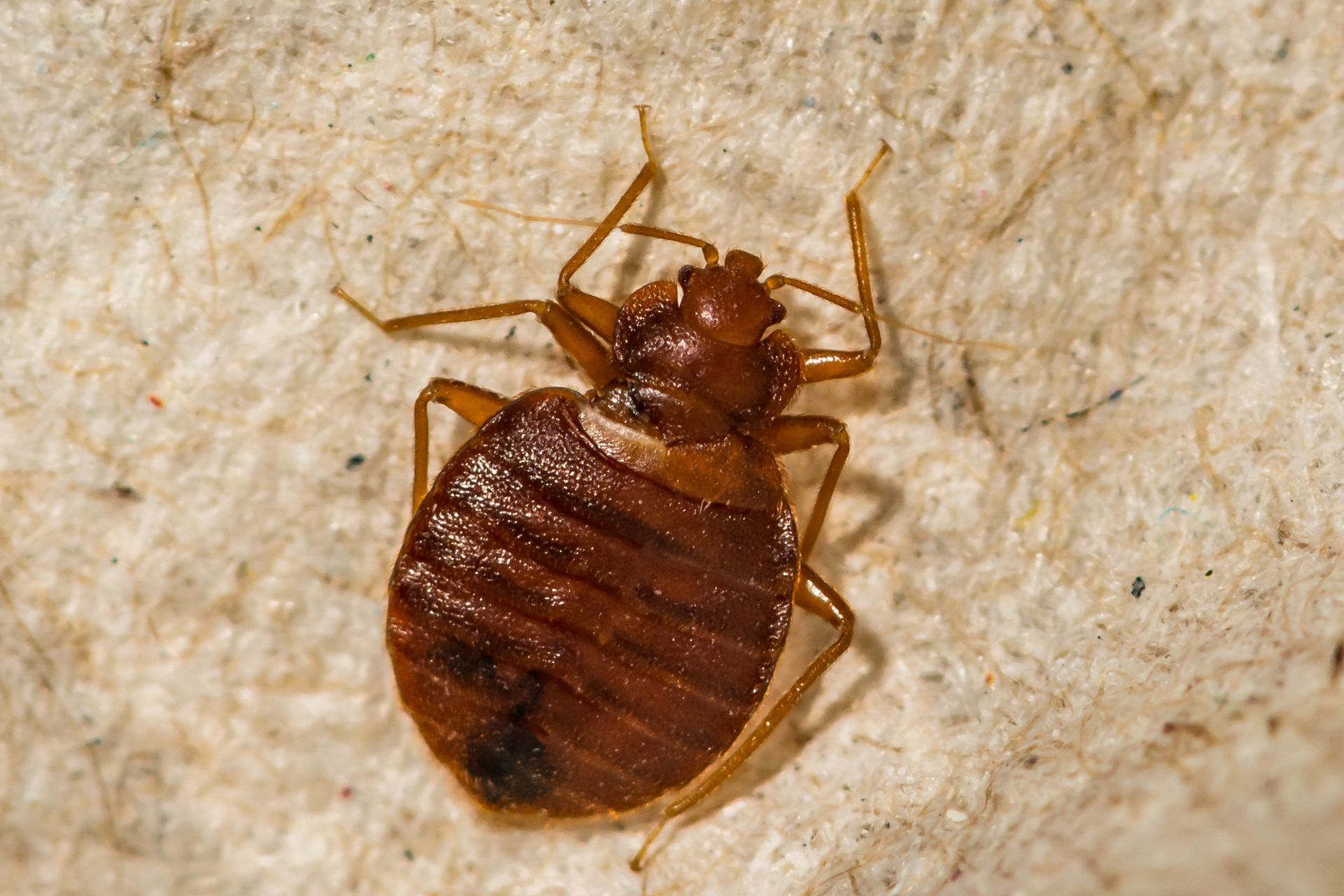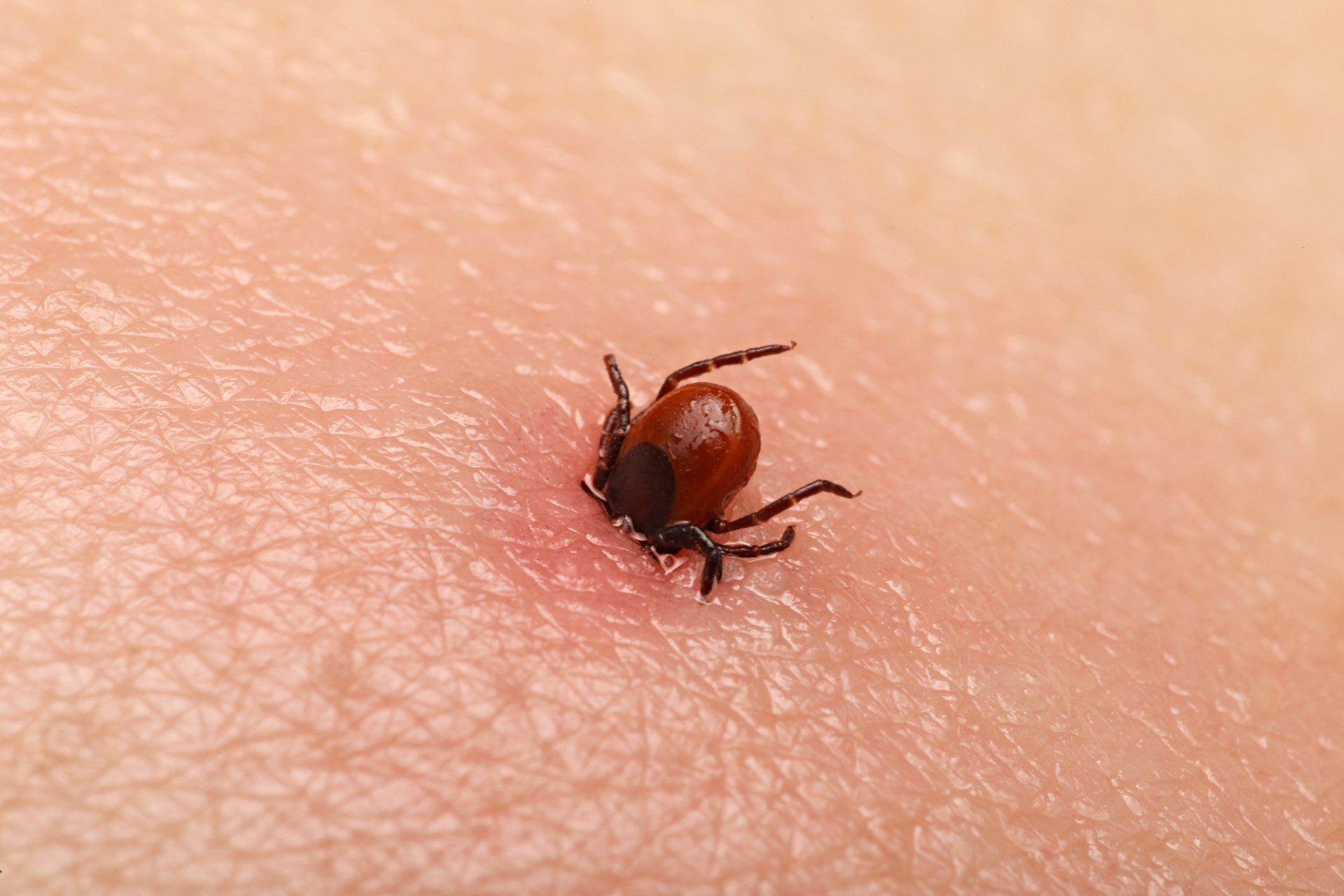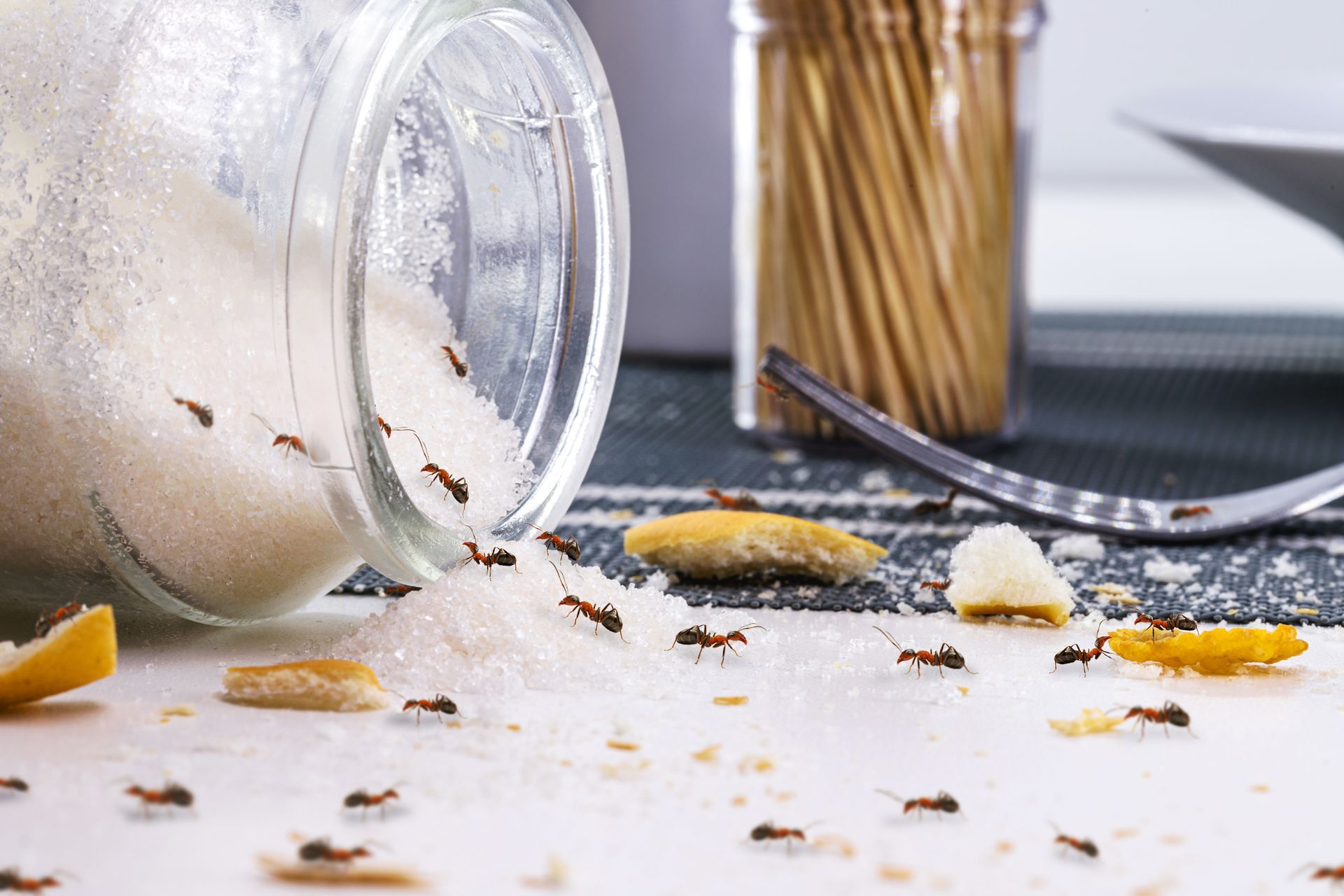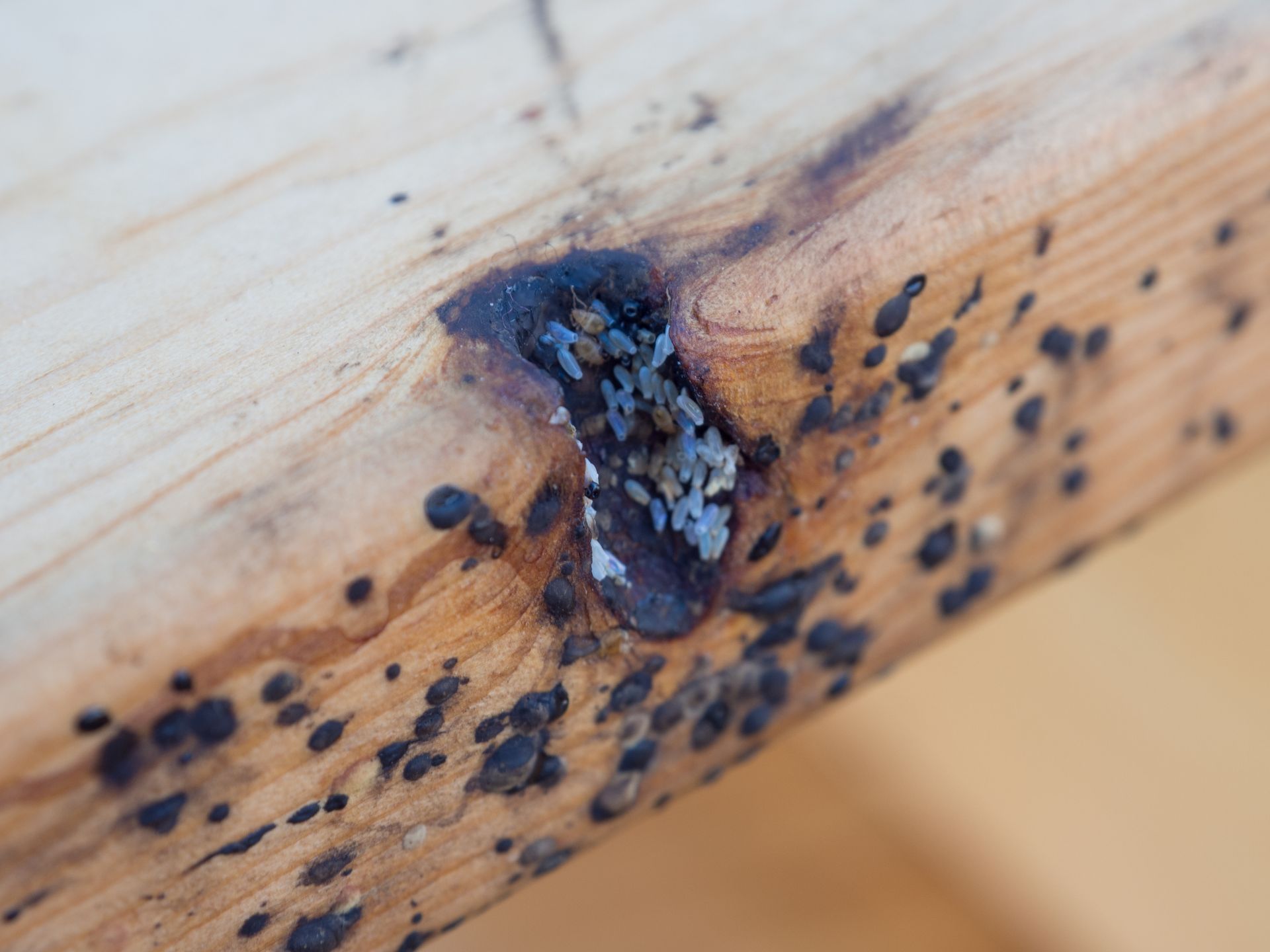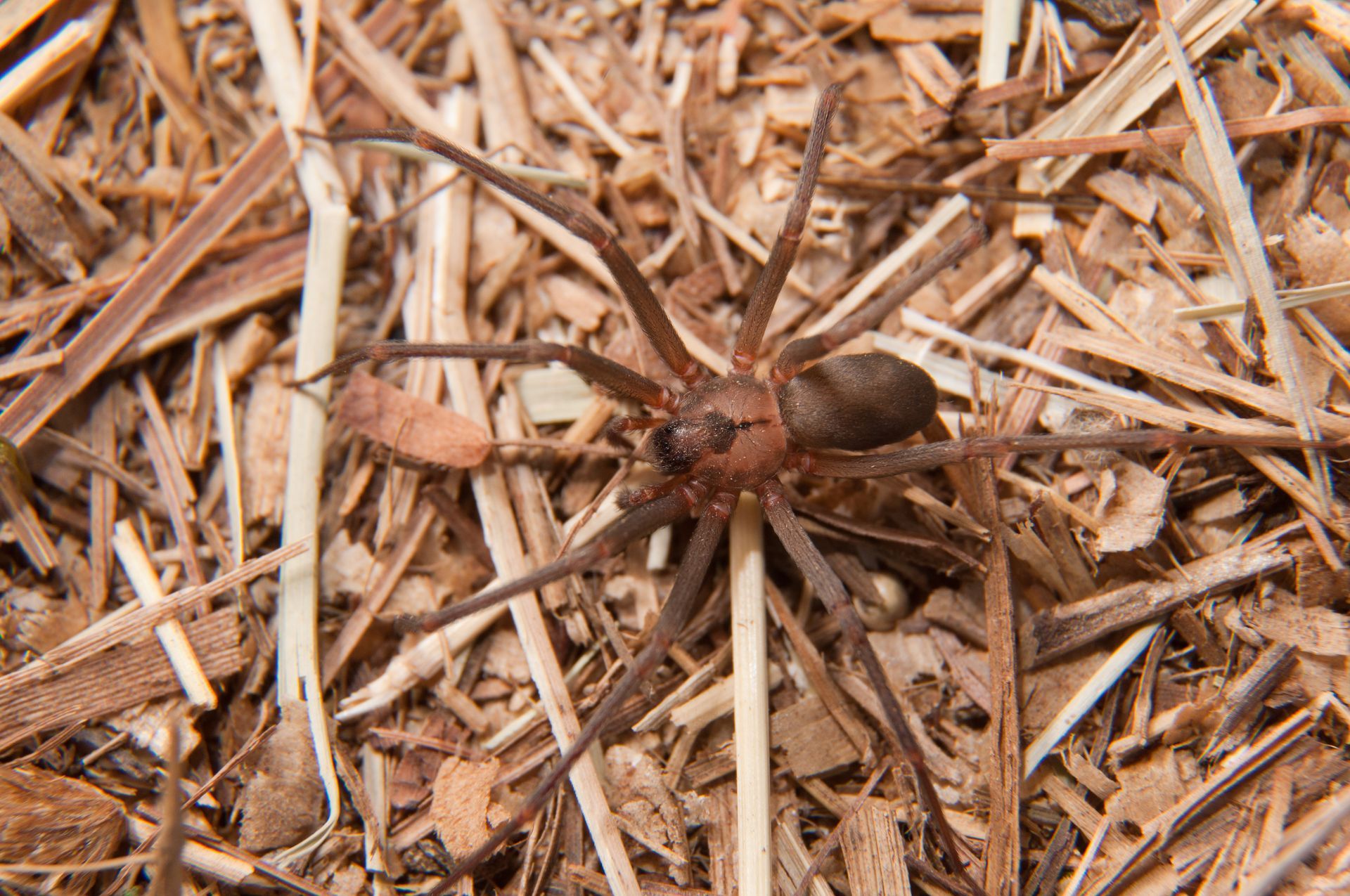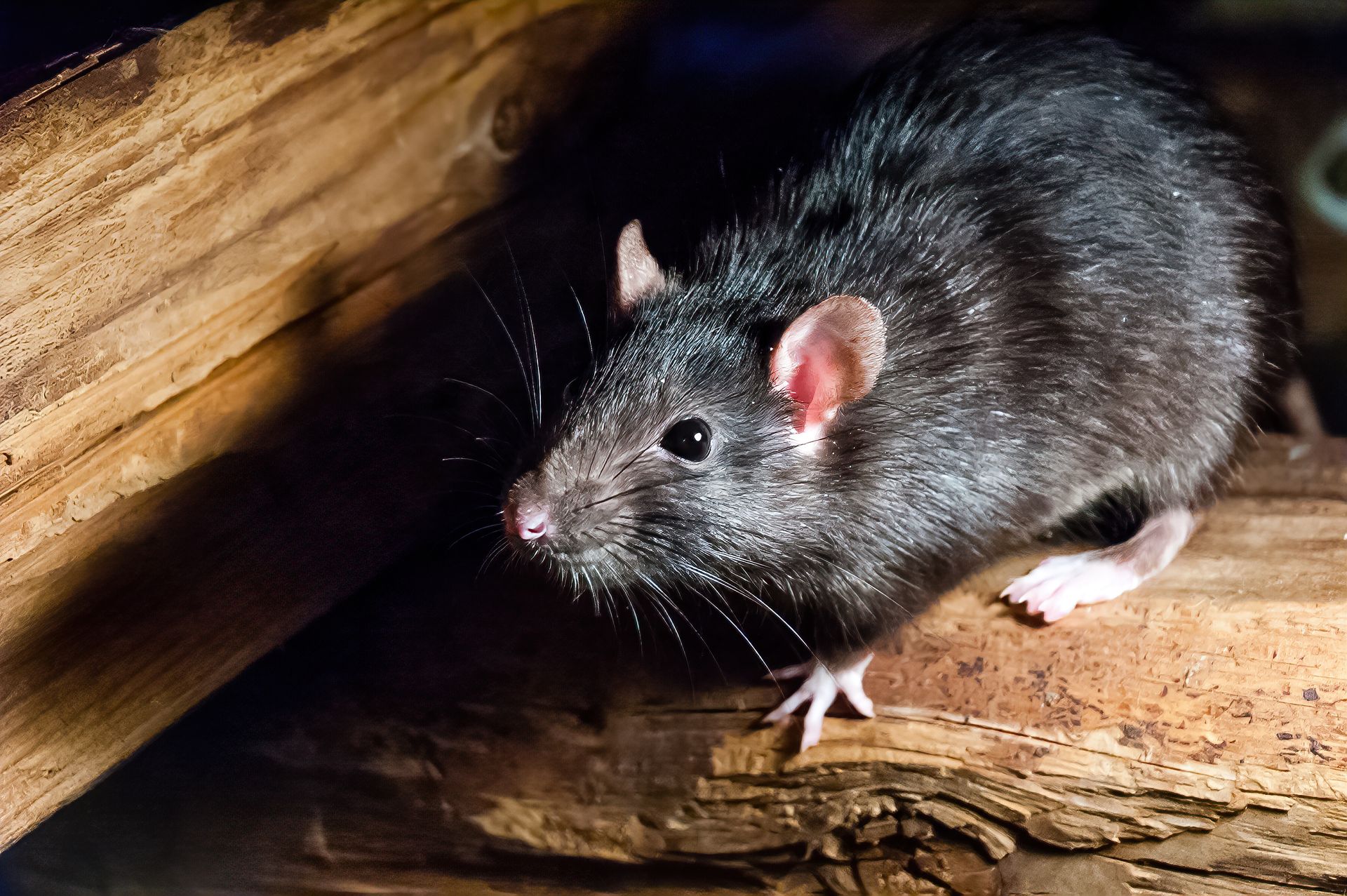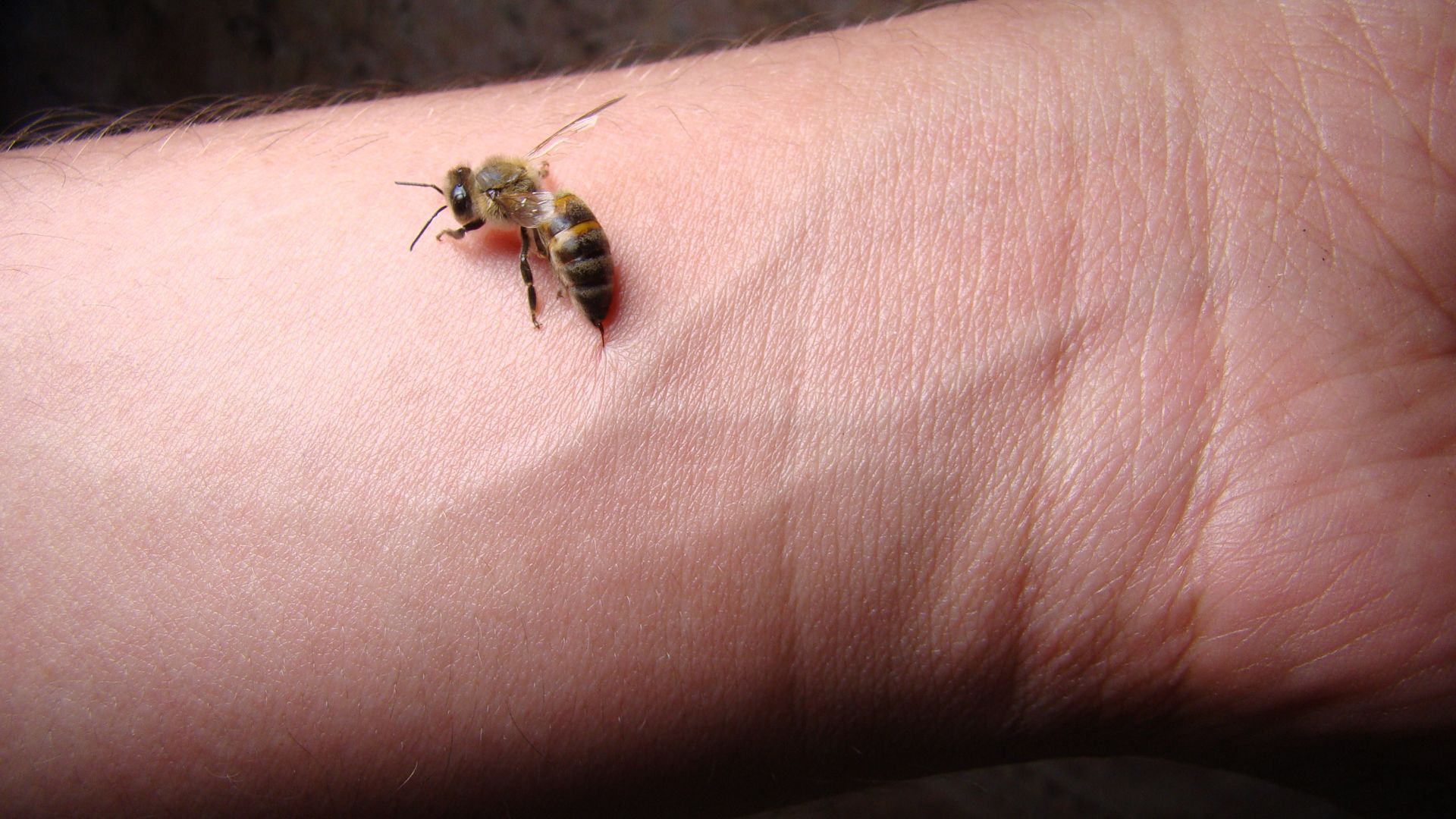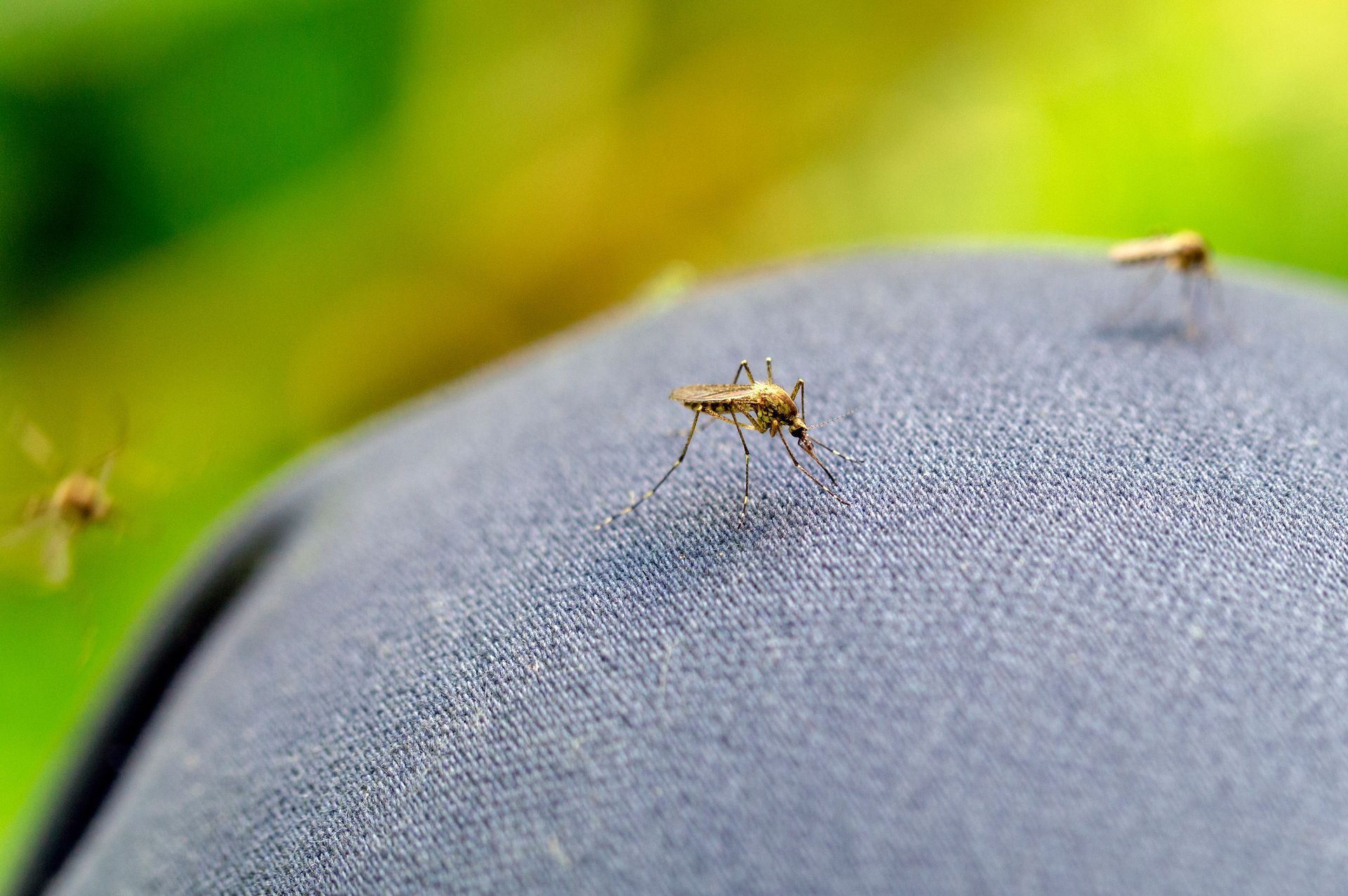What Are Wasps?
Wasps are a class of flying stinging insects that have over 30,000 different species across the planet. Due to the number of species of wasps, it is hard to generalize their appearance and behavior. There are solitary wasps that go their entire lives with minimal interaction with other wasps of their species and there are social wasps that are part of a larger colony they contribute too. They come in a wide variety of colors and sizes, but the most common species are easily identified by their black and yellow appearance. Most wasps also share a defense mechanism. They are capable of using a sharp, smooth stinger to deliver a small amount of venom. This can be used as defense as well as for hunting other insects that they feed on. Most wasps are omnivorous and will mostly feed on nectar and insects. That said, when food resources run low, they will scavenge for food at picnics and outdoor parties in search of sugary drinks and protein rich foods.
Wasp Family & Classification
A wasp is classified as any narrow waisted, flying, stinging insect in the suborder Apocrita of the order Hymenoptera. This is the same suborder as ants and bees, but these suborders are segmented further into several clades and families. The number of wasp species that exists span over several families with the most common wasps classified in the family Vespidae. Vespidae includes paper wasps, yellow jackets, and hornets.
Wasp Diversity
There are thousands of wasp species that could be native to any given area with the right climate. Several clusters of closely related wasps have unique features that help them survive. Fig wasps have developed a relationship with thousands of species of fig plants, where the plant relies exclusively on fig wasps to pollinate the fig fruit. Other wasps are parasitoids that will lay their eggs inside or on an unsuspecting host. They will also lay their eggs in another wasp’s nest. When the eggs hatch, the larvae will consume the other eggs or the host. Wasps range in size from 2 inches in length to 139 micrometers, making wasps the world’s smallest known insect.
What Do Wasps Look Like?

Wasps are flying insects with 4 wings, a hard exoskeleton, and 6 long thin legs. The wings are a thin membrane connected to the thorax and the pair of forewings is larger than the pair of wings behind them. Their bodies are segmented into 3 parts: the head, mesosoma (thorax), & metasoma (abdomen). The head typically has a set of large mandibles that are used to bite and chew food or plants. The lower segments are often separated by a thin waist called the petiole. At the tip of the abdominal segment is the ovipositor, or stinger. The stinger is a sharp needle that delivers venom and can be retracted into the body to sting its prey or a threat repeatedly.
Wasps Lifespan
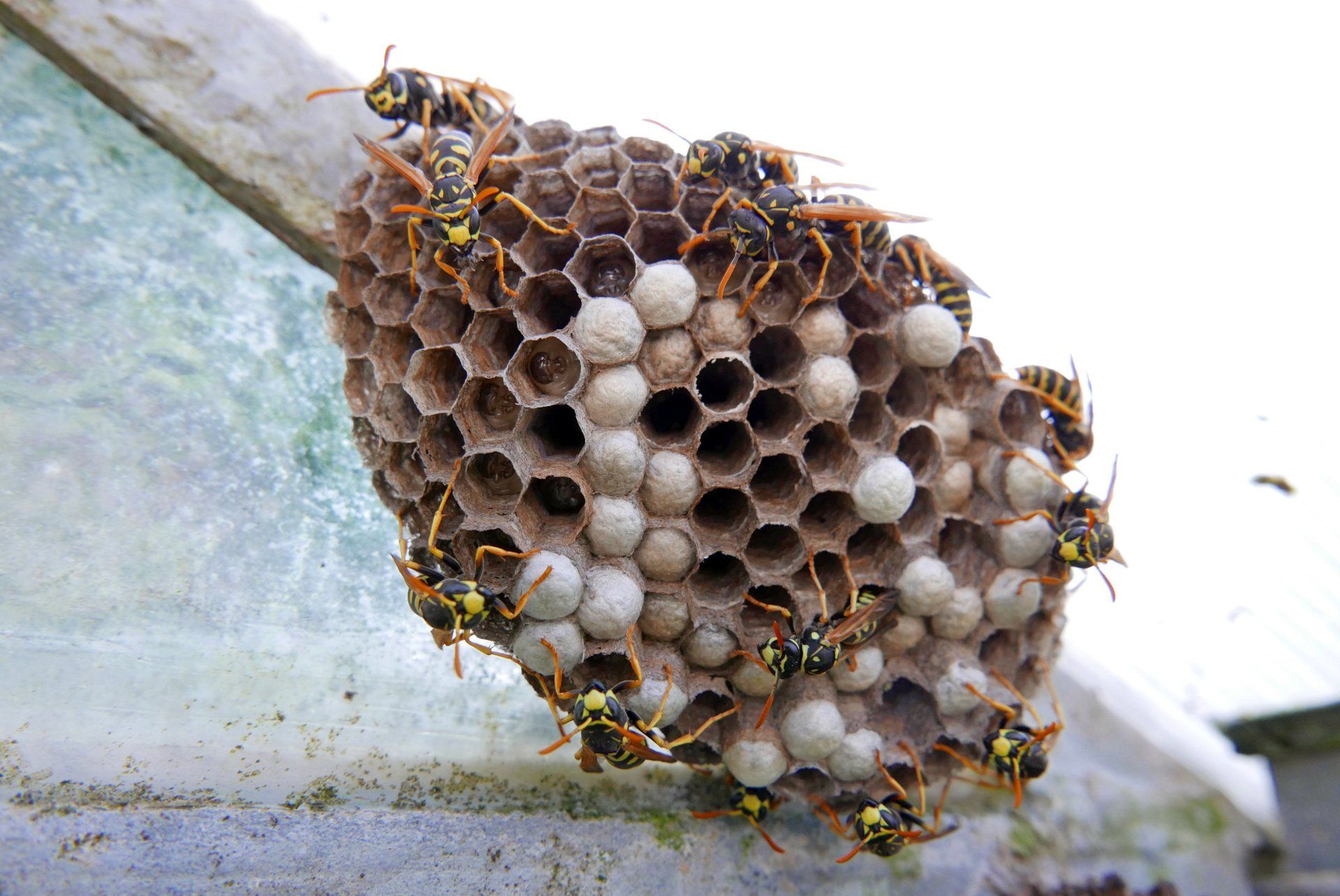
A wasp’s lifespan usually depends on the species and the role they play within the colony. From egg to adult, an average wasp may live between 40 – 60 days in total. Much of this time is spent developing from larvae to pupa with adulthood typically taking up about 1/3 of a wasp’s entire life. Adult workers have a very short-lived period of maturity that averages between 12 – 22 days long. Queen wasps will survive the full year before they die off. Each year, colder temperatures slow the rate at which eggs are laid which result in the colony collapsing with no more workers to maintain the nest. Fertile females are hatched in fall right before they hibernate over winter to become queens of their own nest if they can survive through the cold.
Are Wasps Social Insects?
There are several species of wasps that are eusocial. This means they are part of a larger nest that they play a critical role in. Eusocial colonies are hatched from the same queen making all wasps in a nest closely related. The wasps in the Vespidae family are all social wasps. They construct their nests from some mix of plant fibers, saliva, and mud. The locations of their nests are generally determined by fertile females each spring and will be close to where resources are abundant enough to support a large colony. Most of the other species of wasps are solitary and do not rely on the support of a colony to survive. These species forage alone and are often predatory or parasitic wasps in the Chryidoidea, Vespoidea, and Apoidea families. Unlike social wasp who use their stingers as defense, solitary wasps use it to hunt for food. These species will typically build solitary cells that they lay an egg in with enough food for the larvae to develop into adulthood. The parasitic species are known for laying eggs inside of another live host so their larvae will have something to feed on as it grows.
What Do Wasps Eat
Social wasps do not have complex digestive systems, so they rely on nectar from flowers, the juice from fruits, sugary drinks left out, or the sweet digestive secretions that are produced by their larvae. Even though the adults don’t eat much else for themselves, when you see a social wasp moving around, they are spending most of their time foraging or scavenging for protein rich foods to bring back to the larvae in their nest. Wasps will find other insects like caterpillars, aphids, and other common garden bugs to kill and feed to their young. The larvae have the digestive capabilities that allow them to consume the proteins they need to pupate into adult wasps. Solitary wasps, on the other hand, have developed into excellent hunters. These wasps are typically much bigger and can attack its prey before it eats.
Wasps’ Purpose
Wasps’ primary role is to consume other insects to provide food for themselves and their young. By doing so, they play a large role in the overall health of an ecosystem by maintaining a healthy balance between local plant life and bugs that would otherwise cause significant damage. By providing this natural pest control, harmful garden bugs like caterpillars and aphids will be kept in check. They also play a smaller role as pollinators. They do spend their time moving from flower to flower to drink nectar, so they accidentally transfer pollen while doing so. Their bodies are not as adept at carrying pollen as bees are because their bodies are smooth, and the hairs are not as densely packed but there are some plants that are exclusively pollinated by wasps due to them being selective pollinators. Some species of figs and orchids would not exist if it were not for the pollination of certain wasp species.
Why Do Wasps Sting?
Wasps can retract their stinger which allows it to deliver painful stings multiple times extremely quickly. Each individual strike delivers a small amount of venom. Different species of wasps use their stinger for different reasons. Solitary wasps primarily use their stinger to hunt their prey and deliver a dose of venom that will incapacitate their next meal. The venom causes intense pain in humans, so it is likely enough to kill or severely damage another small insect. Social wasps are foragers so there isn’t as much need to hunt for food. Social wasps are more likely to use their stingers for defense rather than offense. Wasps will sting when they feel threatened or if they feel as if the wasps’ nest is threatened. That said, social wasps will still use their stinger to attack a meal and solitary wasps will also use their stingers to defend themselves if they need to.
Are Wasps Parasites
There are a handful of wasp species that are parasitic. Cuckoo wasps, tiphiid wasps, scoliid wasps, and velvet ants lay their eggs inside, on, or near their next food source. If the eggs are laid inside or on the host, the larvae will consume the host while it is still alive. If eggs are laid near other eggs, the parasitic larvae will consumer the larvae of the host species. Most other wasp species are omnivores that are fed as larvae before developing into an adult wasp.
Wasp vs Bees
Wasps and bees share many similarities in appearance, purpose, and behavior. Many common species of wasps share the yellow and black color patterns that are found on bees. Social wasps and bees also share a hive minded relationship with their nest and queen. Bees are typically gentler and more docile while wasps tend to be more aggressive and territorial. Bees are active pollinators that play a critical role in their ecosystems. Wasps are also pollinators, but they are not as effective as pollinators as honeybees. They do play a critical role as specialized pollinators that have a unique relationship with certain plants that are exclusively pollinated by wasps and not bees.
Wasp Facts & Information
- Wasps can be found on every continent except for Antarctica
- Wasps can recognize flight patterns and facial markings
- Only female wasps have stingers
- Wasp coloration is species specific and can include yellow, black, red, brown, orange, green, and blue
- Wasps have been shown to use logic in studies
- Wasp species have co-evolved with certain plants that require a wasp to pollinate
Wasp Pest Control
The emergence of wasp populations in late spring and early summer are never a good sign for homeowners. This typically means that there is a new wasp colony somewhere around your property. Getting rid of wasps is important but wasps can pose a serious health threat to humans and sometimes DIY deterrent methods fail. If other wasp control efforts have failed, it is important to get your wasp problem treated by professionals. Our licensed and trained wasp control experts can come find the wasp nest and treat it effectively and safely to ensure that wasps no longer pose a threat to you and your family. Call today to schedule a wasp inspection today!
Wasp FAQs
-
Can a wasp sting you?
Wasps are notorious for being aggressive and territorial which is a bad combination since they are armed with a stinger. This stinger can be retracted and used repeatedly in a very short period. This stinger also injects a small amount of venom that can cause intense pain and ongoing discomfort.
-
Are wasps a problem?
Wasps are not necessarily a problem unless they pose a threat to you or others. They are actually effective natural pest control that help keep harmful garden pest populations under control. That being said, wasps can swarm and even kill if a group overwhelms its intended target. It is recommended that signs of wasp activity are inspected by professionals to ensure that a wasp nest isn’t close by.
-
What is the purpose of the wasp?
The role that wasps play in their ecosystems are pollinators and pest control. A wasp’s diet consists of nectar and insects, so they are able to consume a large number of harmful insects while also spreading pollen as they move from plant to plant.
Request A Free Estimate
We will get back to you as soon as possible
Please try again later
Immediate Service Available
Services
Customer Care
Legal
Working hours
- Mon - Sun
- -
All Rights Reserved | EcoGuard Pest Management | All Phone Calls Recorded | By Using Website You Agree To Terms Of Use



